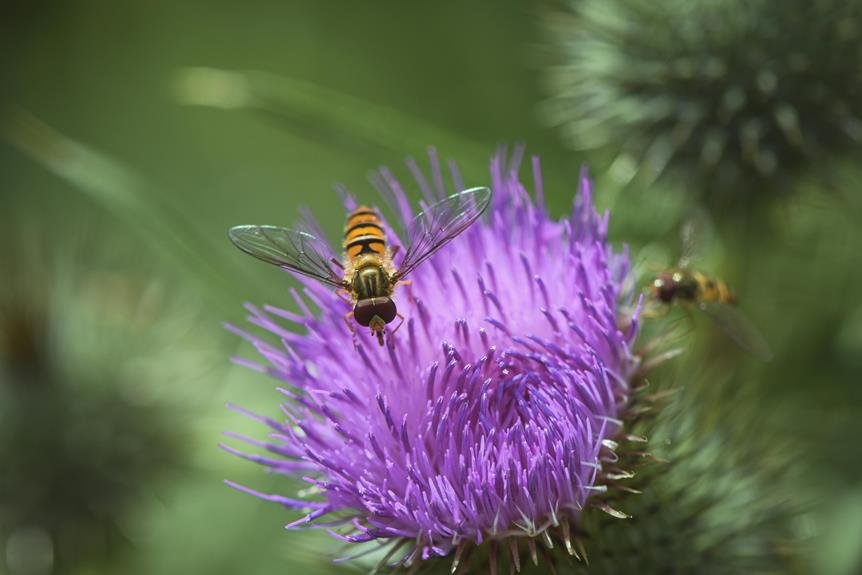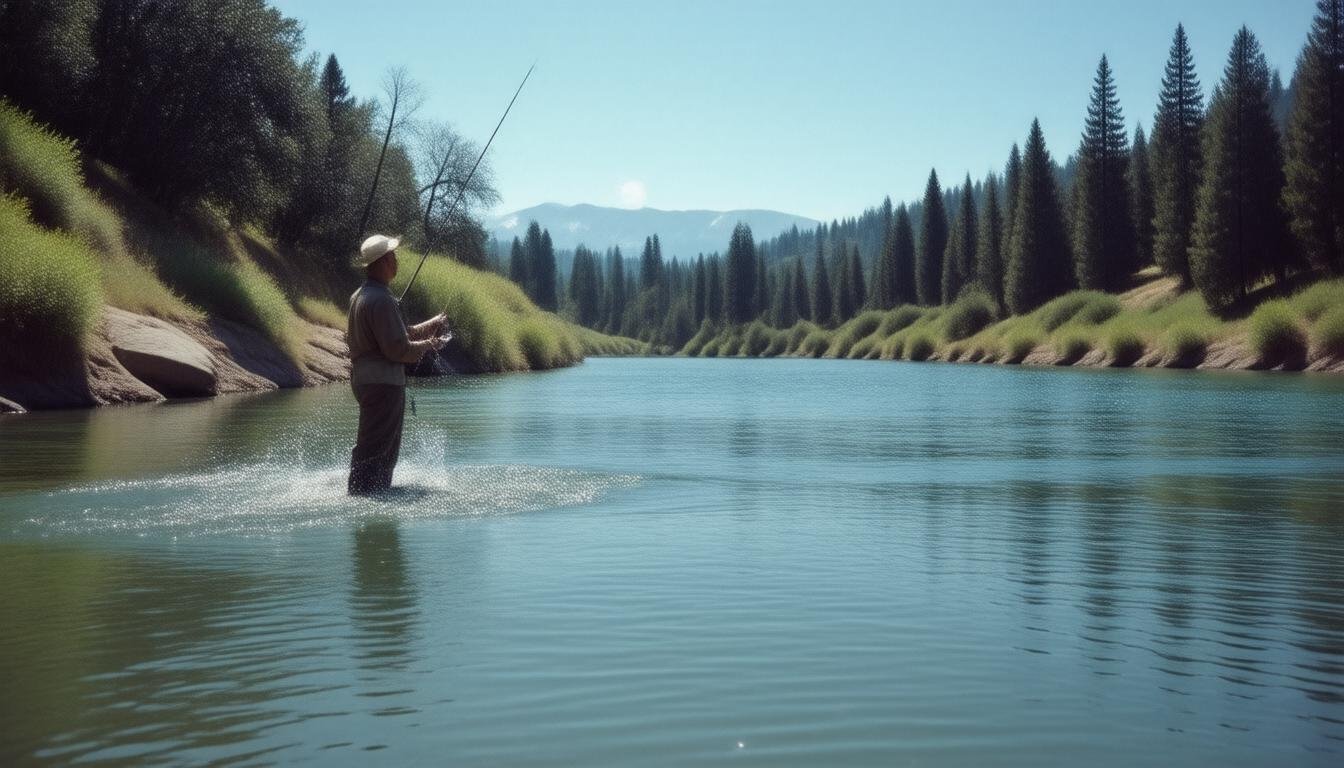Aquatic insects, including mayflies, caddisflies, and midges, are a primary food source for trout and other gamefish in freshwater fisheries. Understanding their life cycles, habitats, and behaviors is essential for effective fly selection and presentation. Mayflies undergo a complex life cycle with three distinct stages, while caddisflies are differentiated by their unique case-building behavior. Midges, another essential food source, have specific emergence patterns. Recognizing the signs of an impending hatch and adapting fly selection strategies can increase an angler's chances of success. As we explore the intricacies of aquatic insects, the nuances of fly fishing strategies begin to unfold, revealing the importance of precise timing and adaptation.
Key Takeaways
- Insect hatches trigger feeding frenzies in trout, providing brief opportunities for anglers to present imitative flies.
- Mayflies, caddisflies, and midges are essential aquatic insects for fly fishing, with distinct life cycles and habitats.
- Understanding the life cycles, habitats, and behaviors of aquatic insects is crucial for effective fly selection and presentation.
- Recognizing signs of an impending hatch, such as water temperature and aquatic vegetation, allows anglers to prepare with suitable fly patterns.
- Capitalizing on brief windows of intense feeding activity during insect hatches can increase the chances of success on the water.
Fly Fishing Insect Hatches
In fly fishing, understanding the timing and characteristics of insect hatches is crucial, as they trigger feeding frenzies in trout and other gamefish, providing anglers with brief yet intense opportunities to present imitative flies. Effective fly selection strategies rely on hatch observation techniques, such as monitoring water temperatures, flow rates, and aquatic vegetation to anticipate the emergence of specific insects. By recognizing the signs of an impending hatch, anglers can prepare with suitable fly patterns, increasing their chances of success. For instance, observing a mayfly hatch may prompt the selection of a dun or spinner pattern, while a caddisfly hatch may warrant the use of a pupa or adult imitation. By mastering hatch observation techniques and adapting fly selection strategies, anglers can capitalize on these fleeting opportunities.
Mayfly Life Cycle
During their complex life cycle, mayflies undergo a series of distinct stages, each with unique characteristics that are essential for fly fishermen to understand in order to effectively imitate them. Mayfly metamorphosis involves a complete transformation from egg to adult, with three distinct stages: nymph, dun, and spinner. The nymph stage, where mayflies dwell in aquatic environments, is pivotal for fly selection. As mayflies emerge, they enter the dun stage, characterized by upright wings and a brief duration. Finally, the spinner stage marks the final phase, where mayflies mate and perish. Understanding these stages is essential for developing effective Spinner Strategies, allowing fly fishermen to capitalize on mayfly hatches and increase their chances of success.
Caddisfly Identification
Caddisflies can be differentiated from other aquatic insects by their unique case-building behavior, where larvae construct protective shelters from available materials like rocks, twigs, and plant fragments. This behavior is a key characteristic of caddisfly identification.
| Characteristics | Description |
|---|---|
| Body shape | Elongated, worm-like |
| Larval size | 1-50 mm |
| Case-building materials | Rocks, twigs, plant fragments |
| Wing structure | Four wings of nearly equal length, covered with tiny hairs |
| Habitat | Aquatic environments, including rivers, streams, and lakes |
Caddisfly behavior is also characterized by their larval characteristics, such as their ability to construct complex cases and their feeding habits. Understanding these characteristics is essential for effective fly fishing, as it allows anglers to accurately imitate caddisflies and increase their chances of catching fish.
Midge Fly Patterns
Midges' diminutive size belies their importance as a food source for trout, making it essential to have a well-stocked arsenal of midge fly patterns to effectively imitate their various life stages. Understanding midge behavior is vital for successful fly selection. During hatches, trout key in on emerging midges, making patterns like CDC Yellow Midge Emerger effective. As midges metamorphose from pupa to adult, stillborn patterns can be deadly. Later, hackled adults imitate the adult midge stage. When selecting midge fly patterns, consider the stage of the hatch and the trout's feeding behavior. A well-rounded selection of midge patterns can increase the chances of success on the water.
Aquatic Insect Habitats
In aquatic environments, the habitats of various insects, including mayflies, caddisflies, and midges, play a critical role in their life cycles and ultimately influence the feeding behaviors of trout and other gamefish. These insects migrate vertically and horizontally through the water column, responding to changes in water quality, temperature, and light. Mayflies, for example, inhabit areas with moderate to fast currents, while caddisflies prefer slower waters with abundant vegetation. Midges, on the other hand, thrive in areas with low oxygen levels and high organic matter. Understanding the specific habitats and migration patterns of these insects is essential for fly fishers to anticipate and match the hatches that will attract trout and other gamefish. By recognizing the intricate relationships between aquatic insects and their habitats, anglers can refine their strategies and increase their chances of success.
Semi-Aquatic Food Sources
Semi-aquatic insects, such as dragonflies, damselflies, and water striders, inhabit the interface between aquatic and terrestrial environments, serving as a essential food source for trout and other gamefish. These insects are often overlooked, yet they can be a fundamental component of a trout's diet. Grasshopper behavior, for instance, involves migration from terrestrial areas to aquatic environments, making them an attractive food source for fish. Similarly, cricket migration patterns can also lead to their presence in aquatic environments, where they become prey for trout. Understanding the habits and behaviors of semi-aquatic insects is essential for fly fishers, as imitating these insects can lead to successful catches. By recognizing the importance of semi-aquatic food sources, anglers can expand their repertoire of fly patterns and improve their chances of landing trout.
Trout Food Chain Dynamics
The intricate relationships within the trout food chain, where aquatic insects, crustaceans, and smaller fish serve as a complex web of prey and predators, ultimately influence the feeding behaviors and preferences of trout. This delicate balance is susceptible to trophic cascades, where changes in one species' population can have ripple effects throughout the ecosystem. Ecosystem resilience is vital in maintaining the stability of the food chain, as disturbances can have lasting impacts on trout populations. Understanding the dynamics of the trout food chain is essential for effective fly fishing, as it allows anglers to anticipate and adapt to the feeding behaviors of their quarry. By recognizing the intricate relationships within the ecosystem, anglers can increase their chances of success on the water.
Insect Hatch Timing Essentials
Accurate timing of insect hatches is essential for successful fly fishing, as it enables anglers to present their flies when trout are most actively feeding on specific insects. Understanding the timing of insect hatches is pivotal, as it allows anglers to capitalize on the brief windows of intense feeding activity. Water temperature plays a critical role in regulating insect hatches, with specific temperature ranges triggering the emergence of different insects. Fish behavior also influences hatch timing, as trout adapt their feeding patterns to coincide with the availability of specific insects. By understanding the intricate relationships between water temperature, fish behavior, and insect hatches, anglers can optimize their fly selection and presentation to maximize their chances of success.
Frequently Asked Questions
How Do I Determine the Best Fly Size for a Specific Insect Hatch?
To determine the best fly size for a specific insect hatch, measure the insect's body length and width to establish a precise proportion, then match the fly's proportions to guarantee an accurate representation, verifying a convincing imitation.
What Role Do Water Temperature and Clarity Play in Insect Hatches?
Water temperature and clarity play a vital role in triggering insect hatches, as certain species are stimulated by specific thermal and optical conditions, with temperature influencing insect development and water layers affecting insect migration and emergence.
Can I Use the Same Fly Patterns for Both Rivers and Lakes?
When comparing river and lake fly fishing, distinct nuances and characteristics must be considered. River nuances involve faster currents, varied structure, and turbulent water, whereas lake characteristics feature stillwater, uniform depth, and clearer visibility, necessitating tailored fly pattern selection for each environment.
How Often Should I Rotate My Fly Selection During a Fishing Trip?
During a fishing trip, rotate fly selection every 20-30 minutes to maintain a dynamic presentation, ensuring a consistent fishing rhythm, and utilize a well-organized fly box to facilitate swift pattern changes and maximize hookup opportunities.
What Are Some Common Mistakes Beginners Make When Trying to Match the Hatch?
When attempting to match the hatch, rookie errors often lead to hatch frustration, including misidentifying insects, neglecting to observe fish behavior, and failing to adjust fly selection according to changing hatch conditions and timing.
Conclusion
In the domain of aquatic fly fishing, a profound understanding of insect life cycles, habitats, and behavior is paramount to success. As the intricate dance of predator and prey unfolds, the astute angler, armed with knowledge of mayfly metamorphosis, caddisfly camouflage, and midge migrations, orchestrates a symphony of deception, enticing trout to rise to the perfect imitation.









